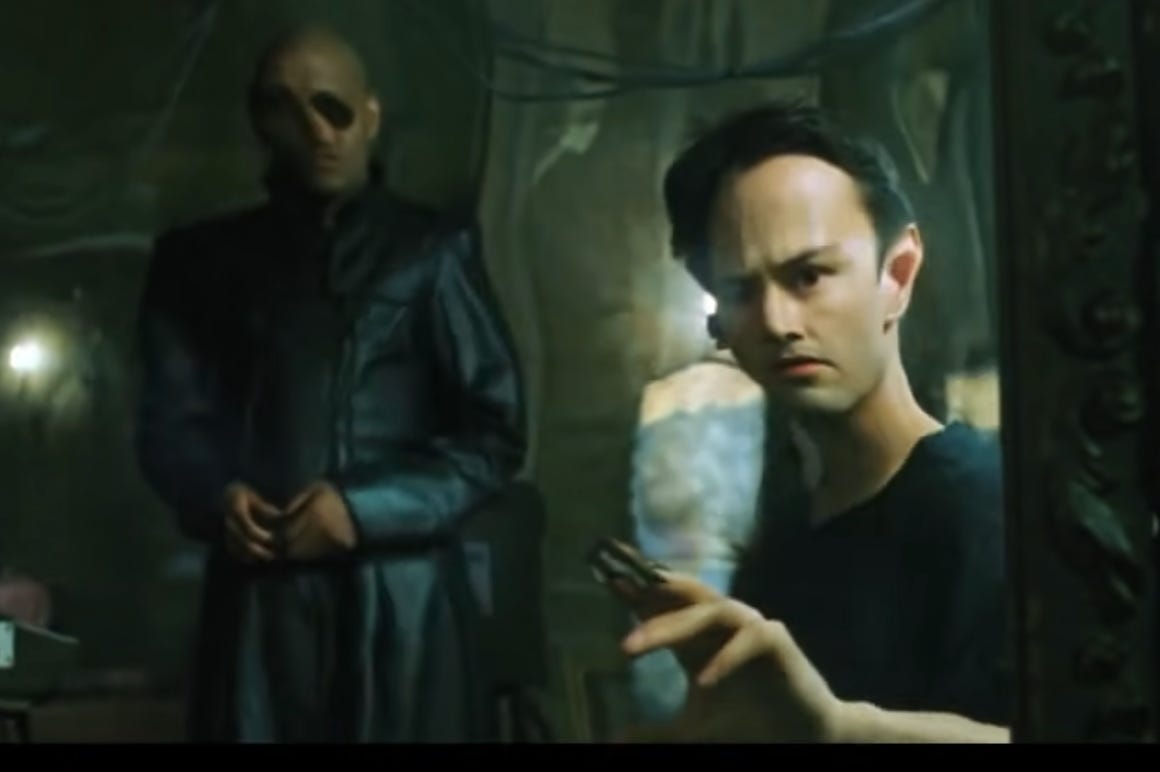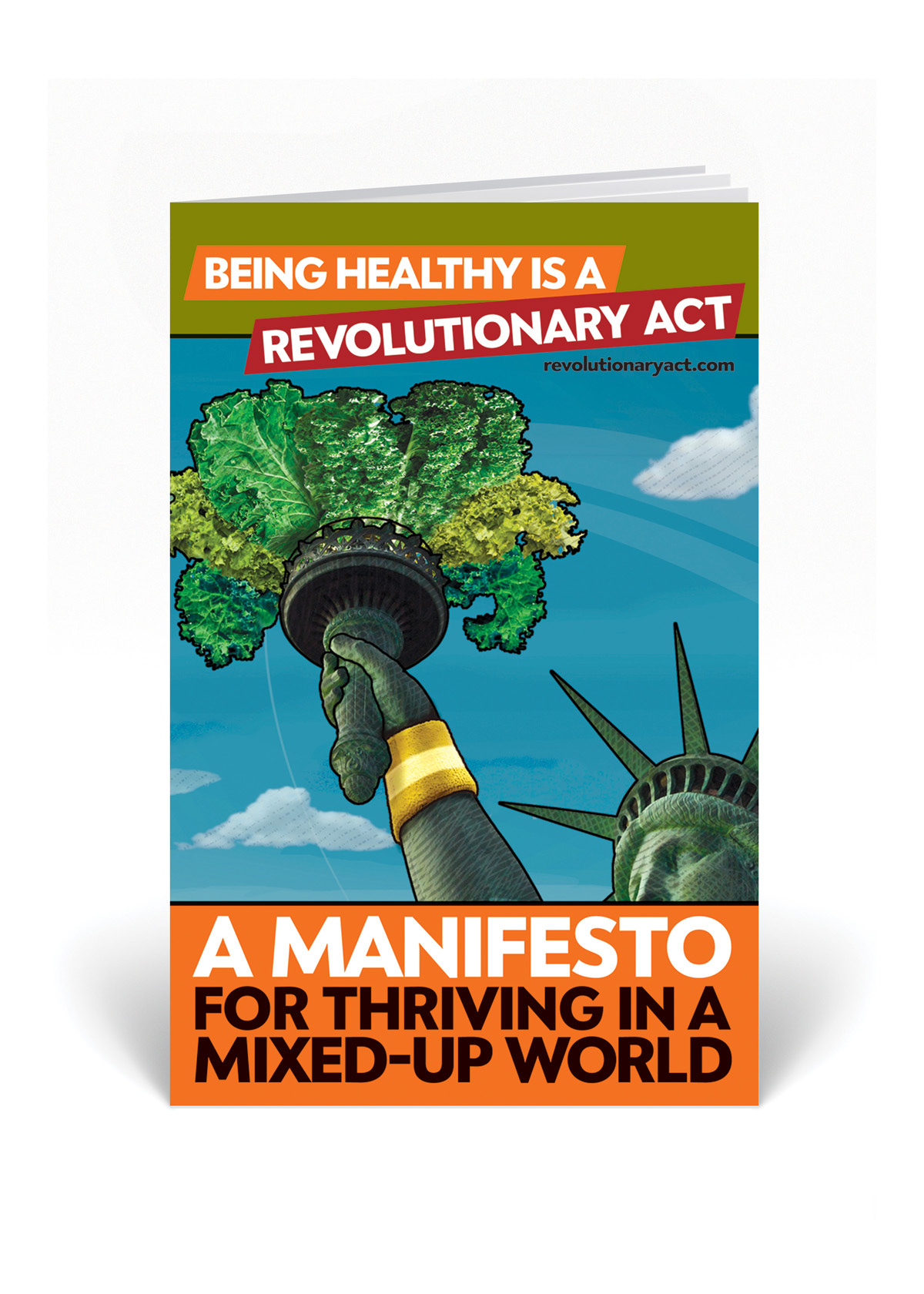Get Ready for Weirdness
Oh sure, we all love the idea of healthy change. But are we remotely prepared for the real-life disruption it produces? I think not.

If I had to pick my least favorite, most commonly used term in the health-improvement space, it would be lifestyle change.
Why? Because our way of life is not some flouncy “style” choice. Our daily habits and priorities are not something we can take on and off like a trendy shirt.
In the context of our unhealthy culture, healthy life change — if it’s going to be real and lasting — is a deep, inherently disruptive process.
It’s a boundary-busting, transformational odyssey that will challenge your self-perception, your relationships, and your most fundamental patterns of thought, choice, and action.
As I wrote almost 15 years ago in my Manifesto for Thriving in a Mixed Up World (Experience Life, 2010), changing your life in the direction of better whole-person health is very much a revolutionary act — one that requires determination, equanimity, and derring-do.

Because make no mistake: The minute you start messing with the Unhealthy Default Reality, things can and probably will start to get, um, weird.
By that, I mean things will not be the way they have always been. You will not be the way you always have been.
Breaking away from the Unhealthy Default Reality (UDR) is a bit like Neo’s experience busting out of the Matrix.
You take that Red Pill, and both the life you’ve come to know and the person you think you are may suddenly feel … different. Unfamiliar. Unpredictable.
As you question your engrained assumptions and experiment with seemingly small changes to your established routines, your daily experiences will shift.
Your “normal” perceptions and reactions will begin to change—often in ways you don’t initially understand or anticipate. Old structures might start to wobble. Long-binding restraints will start to loosen.
All of this may cause you to feel more free, energized, and hopeful. It may also cause you to feel a bit kooky and off-kilter.
It’s important to be prepared or this weirdness. It’s also helpful to see it as the sign of progress it almost certainly is.
Here’s why:
As you work through your own process of healthy life change, you may find yourself in an untethered relationship not just with the Unhealthy Default Reality, but with your own familiar patterns, assumptions, and reactions.
Even if you feel uncertain and a bit at sea, you may find yourself suddenly feeling a lot more clear headed and energized than you have in a long time.
You may feel different in your body and mind—inclined to bounce more, breathe more, notice more, feel more. You may start flirting with new boundaries and experimenting with bold new choices.
As a result, you may find other people looking at you like, “Excuse me, but who are you?”
You may start to feel like you aren’t entirely sure how to answer that question.
That’s all good. It means your Matrix-busting magic is working, and an exciting new phase of your Healthy Deviant journey has begun.
But when our familiar, normal structures start to break down, even when those structures form the prison walls of a health-destroying dominant culture, it can feel strange and disconcerting.
Changing anything—even the automatic, default choices that have been keeping you stuck and suffering—almost always involves a moment of from-this-to-that transition.
And at first, that moment can look and feel a lot like chaos.
Old systems get disrupted. Cracks appear in your armor of normalcy. Questions begin to form around the edges of former certainty. The stale, warmed-over air you’ve been breathing is suddenly replaced by a fresh, cool breeze.
This can make you feel exposed, wobbly, and at risk. It can make you want to run for cover, abandon your experimental adventure, and retreat to the comfort of your old, familiar turf.
Just for now, hang in there with me if you can. Stay on this ride a little longer, and I think you’ll start to settle into a whole new groove.
Let’s start with a quick reality check on how healthy change really happens.
We are taught to believe that change happens like this: You decide to pursue a desired change, go for that goal, and make progress, and eventually—boom—the goal is achieved. Yay, you!
How often does it really work that way? Almost never.
But that’s the way all good before-and-after stories go, right? By the time our goals for healthy change are achieved, we are ready to forget about all the stuff we tried that didn’t work, all the things we tried and failed, and instead just stick to the expected plot line.
And so most of what we see and hear about healthy change makes it seem a lot simpler, easier, and more direct than it typically is.
Seen in its cleaned-up, camera-ready form, the path to healthy change looks like this:
Seen from thirty thousand feet, it looks more or less like a straight-line trip. You start in one place, set yourself on a path to an inspiring vision, and accomplish a series of incremental goals on the way to your destination. Lovely.
But unretouched, seen up-close and at human scale, that path may have dozens of switchbacks, temporary road closures, detours, construction zones, and confusing cloverleaf interchanges—moments when you’re rerouted or thrown off track, or when you just plain lose momentum and find yourself back at a location that seems frustratingly close to where you started.
In reality, change more often works like this …
You think about a desired change for a while, perhaps a long while, and eventually, you decide it’s worth pursuing.
You may prepare or procrastinate for ages before you begin to take action.
You may run into obstacles, run out of steam, or sink into the quicksand of your own unconscious resistance to change.
You may surge forward with excitement, only to sink back into the grip of your oldest fear.
You may take cautious steps, find yourself in uncharted territory, and run in the opposite direction of your stated goal.
When you get stuck in one of those seemingly infinite repeating loops or run into an unanticipated roadblock or find yourself suddenly heading up a steep, unmarked hill, it’s easy to feel demotivated.
It can feel like you’re losing, like you’re a failure, like you’ll never reach your destination.
You may berate yourself and convince yourself you are incapable or unworthy. You may decide this whole change thing is just not for you or not worth the bother.
Until the pain or desire builds up again, and then .…

You will likely find yourself completing this advance-and-retreat pattern—from the familiar to the unfamiliar and back—many, many times over the course of any change effort. And perhaps many times during the course of a single day.
That’s totally okay.
Once you see them for what they are, these out-and-back experiences can be turned to your Healthy Deviant advantage (this is a big part of what I help people discover for themself through my interactive programs).
Just know the “weird” will come — whether you proceed with my help or on your own — and that it is a predictable part of escaping the UDR.
Greet the weirdness with open-armed recognition and anticipation rather than trepidation and shutdown.
Each time you do, it will seem more comfortable and less, well, weird.
What you are experiencing is not “lifestyle change.” What you’re experiencing is an essential discovery and growth process.
It’s a process of learning to see your path more clearly, identifying your patterns, assessing your relative areas of capacity and challenge. It’s a process of developing the new wisdom, skills, and self-respect that will take you where you want to go.
And guess what? Counter to what you may have been led to believe by a bunch of ridiculously truncated, oversimplified before-and-after makeover stories, this is how it goes for everyone.
In my fifteen years editing Experience Life magazine, we received thousands of letters and success-story submissions from people who told us how they’d managed to profoundly change their bodies and their lives—often as the result of skills and knowledge they’d learned from the magazine.
Never, not once, did I read the story of someone who had accomplished their healthy-change goals on the first go or learned everything they needed to know before they set out.
So, here’s the truth: No program — including programs of mine— can completely spare you the experience of trying and faltering. What the best of these guided experiences can do is make the journey a much less halting and frustrating experience.
Over the next few weeks, I’m going to be peppering my posts with some goodies from my Healthy Deviant Adventure program. My goal is to help you reframe your own healthy-change journey, spare you some avoidable detours and delays, get you through the messy parts with more dignity, and help you enjoy the trip.
Meanwhile, I shall leave you with this week’s style-related tidbit and hope to see you tomorrow in our first 15-minute, LIVE 7-Day Adventure session (it starts at 12 PM Central time, and you’ll get the links with instant replay access when you sign up).
THIS WEEK’S TIDBIT
Encouragements to notice, learn, and deviate from the Unhealthy Default Reality in whatever ways feel good to you.
Calling Out the Crazy
One of the wackiest aspects of the Unhealthy Default Reality is its endless proposals to try an endless number of things. SO MANY THINGS.
Alright, I did embrace the power of the listicle to create my 101 Revolutionary Ways to Be Healthy, but there was no proposed time frame or urgency on those.
I think trying 85 different hairstyles in a single year might be going just a little too far …
Here’s to calling out the crazy (and adventuring) together,
P.S. Don’t forget, my LIVE 7-Day Healthy Deviant Adventure starts TOMORROW at 12PM CST, with “Day 1: Wake Up!” You can still sign up and get in on the whole week’s worth of fun …
Wondering what the rest of the week looks like? A peek at each day’s themes below (you’ll get instant, limited-time replays for all of them if you come along for the ride) … 😇
P.P. S. When you like, share, comment, subscribe, or “re-stack” my posts, it it like a little ray of sunshine in my day. And it helps others find my work. So thank you!















